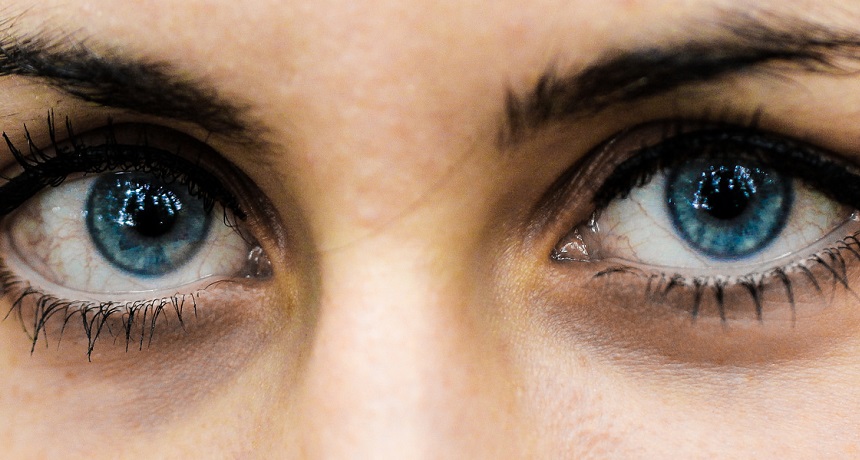Teen researcher eyes peripheral vision
A student’s project connects wide eyes with a larger field of view

The distance between the pupils of our eyes is associated with how much peripheral vision we have.
Axel Naud/Flickr (CC BY 2.0)
PITTSBURGH — How far the outer edge of your line of sight — or peripheral vision — extends can make the difference between stopping a car in time to spare a darting squirrel and being responsible for some new road kill. Now, a student’s science project links the distance between your eyes with how far your peripheral vision can reach.
The span between the pupils of a person’s eyes is called the interpupillary distance. Chloe Reich, 15, decided to find out if this distance affected peripheral vision. Her results won the Oklahoma freshman at Sasakwa High School a trip to the International Science and Engineering Fair. Sponsored by Intel and run by Society for Science & the Public, this competition brings students from all over the world together to show off their science fair projects. (SSP also publishes Science News for Students and this blog).
When doctors test a patient’s peripheral vision, they often hold a sewing pin with a colorful pinhead just behind the person’s right or left ear. The patient stares straight ahead. Then the doctor moves the pin slowly forward toward the front of the person’s visual field. The patient reports when they finally see the pin. But this “doesn’t give you a number you can plot on a graph,” Chloe notes. There are also machines that test someone’s peripheral vision. Such machines, used in doctor’s offices, were too expensive for the teen to use.
So she designed her own method to measure peripheral vision. Chloe built two tall wooden frames. She placed measuring sticks across each frame. Then, volunteers stood in between the two frames with one frame to the right and the other on the left. As the volunteers stared straight ahead at a wall, Chloe moved a colored piece of paper along the measuring stick in each frame. She could then mark down exactly how far that person’s peripheral vision extended.
The teen also measured the interpupillary distance of each recruit. After 15 volunteers and a lot of measurements, she found that the wider apart someone’s pupils are, the more peripheral vision they have.
“I was surprised to find the connection,” Chloe says. “I wasn’t sure what the outcome would be.” The teen hopes to learn more about the different things that make our peripheral vision better or worse. The project has inspired Chloe to become an ophthalmologist — a doctor who studies the eye. “I’ve always liked going to the eye doctor,” she says. “But ever since I started this project I just fell in love with [studying the eye].”
Follow Eureka! Lab on Twitter
Power Words
(for more about Power Words, click here)
interpupillary distance The distance between the pupils of the right and left eye.
ophthalmologists Physicians who specialize in the eye. They begin as general medical doctors and then get several additional years of training on diagnoses and treatment of problems affecting the eyes. Optometrists, in contrast, are doctors but are not trained as physicians (what in the United States are known as “medical” doctors).
peripheral vision Sight that occurs along the outer edges of the direction to which a person is looking. In these outer — or peripheral — areas, objects may appear blurrier and weakly defined. For example, it is often difficult to accurately determine the color, size and shape of objects seen in the peripheral field of view.
pupil The dark center of an eye. The pupil is actually a hole in the eye that allows light to pass through and hit the retina, the part of our eye that is sensitive to light.
retina A layer at the back of the eyeball containing cells that are sensitive to light and that trigger nerve impulses that travel along the optic nerve to the brain, where a visual image is formed.
Society for Science and the Public (or SSP) A nonprofit organization created in 1921 and based in Washington, D.C. Since its founding, SSP has been not only promoting public engagement in scientific research but also the public understanding of science. It created and continues to run three renowned science competitions: The Intel Science Talent Search (begun in 1942), the Intel International Science and Engineering Fair (initially launched in 1950) and Broadcom MASTERS (created in 2010). SSP also publishes award-winning journalism: in Science News (launched in 1922) and Science News for Students (created in 2003). Those magazines also host a series of blogs (including Eureka! Lab).







